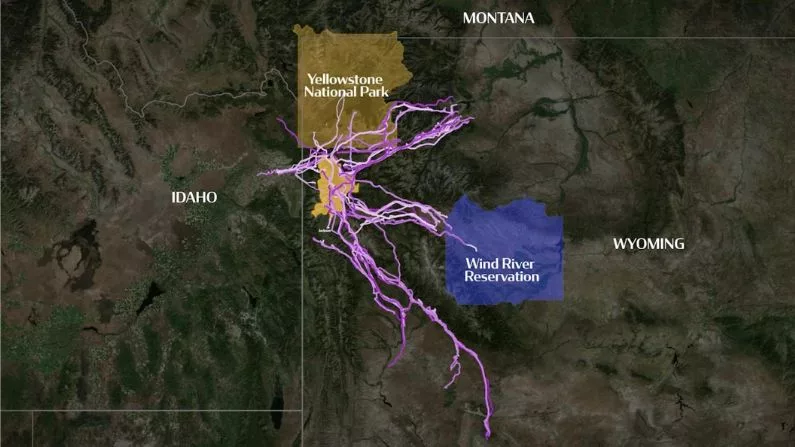This story comes through a content-sharing partnership with Wyoming Public Media.
A film called “Animal Trails: Rediscovering Grand Teton Migrations” highlights how mule deer and pronghorn travel from Grand Teton National Park to winter ranges across Idaho, Wyoming, and the Wind River Reservation. It documents how the animals depend on habitats almost 200 miles away from the park’s boundaries.
Although the deer and pronghorn have been following these paths for centuries, the ability to comprehensively map their movements using GPS tracking is relatively new. However, “Animal Trails” recognizes that the Indigenous peoples in the area have long followed these seasonal movements and understood the connections between high mountain summer ranges and low-lying winter sanctuaries.
“These powerful animals sometimes move in a way that is beyond description,” Eastern Shoshone tribal member George Abeyta said in the film’s opening scene. “To see them, to witness this, lets us know they are worth protecting.”
Many ungulates are drawn to the Tetons to spend their summers munching on the abundant greenery in the verdant, moisture-rich environment. But as summer turns to winter, the mountains become inhospitable to most wildlife and many species migrate to drier, warmer climates to weather out the snowy season.
Gregory Nickerson is a writer and filmmaker with the Wyoming Migration Initiative at the University of Wyoming. He directed “Animal Trails” and said the length of a mule deer or pronghorn’s migration can vary drastically.
“[The migration] can be a short trip, can be just a couple dozen miles or it can be up to 190 miles for some of these animals that are migrating out of Grand Teton National Park and into the Wind River Basin or the Green River Basin or even out by Cody in the Bighorn Basin,” he said. “And there’s also some that go over to Idaho to the wheat fields over there, which is only about 40 miles.”
The ungulate migration is managed by many different players in multiple jurisdictions – like the National Park Service, the Forest Service, the Bureau of Land Management, Wyoming Game and Fish, Idaho Fish and Game, private landowners, and the Shoshone and Arapaho Tribal Fish & Game Department. Nickerson said that the inter-jurisdictional management requires a lot of partnership.
“The animals don’t know any of those boundaries and it’s really up to us to try to steward these migrations so that they can keep going,” he said.
The director said that stewardship of the migration pathways across agencies has largely been a “success story.” Still, Nickerson said the animals are facing more and more challenges as travel between their summer and winter ranges.
“It’s everything from more traffic down the highways to more rural residential development, to solar and wind and oil and gas development,” he said.
Increased disease and drought have also made it more difficult for the animals to move between their seasonal ranges. But, Nickerson said increased GPS tracking and collaborative actions like wildlife friendly fences, overpasses, and conservation easements are helping maintain the animals’ traditional migratory paths.
“These migrations have lasted for a long, long time and it’s really their solution to survive here. If we want to keep these animals abundant, making sure that they have places to migrate and places to live is really the most important thing,” he said.
Every fall, the Wyoming Migration Initiative tracks an individual mule deer and posts its progress on social media as it makes its journey from the area around Grand Teton National Park to its lower-elevation winter grounds. Nickerson said this year’s deer, 665, has a big journey ahead of her.
“665 spent this summer up on Teton Pass, and about the middle of October, she came down from the pass, swam across the Snake River across South Park, and jumped across the highway there right by Lockhart Ranch and went right behind Snow King. She’s headed all the way to the red desert,” he said.
“Animal Trails” was digitally released on November 8 and can be viewed online on Vimeo or YouTube. The film will also play at the Colter Bay Museum and Grand Teton National Park Craig Thomas Discovery and Visitor Center next summer.






